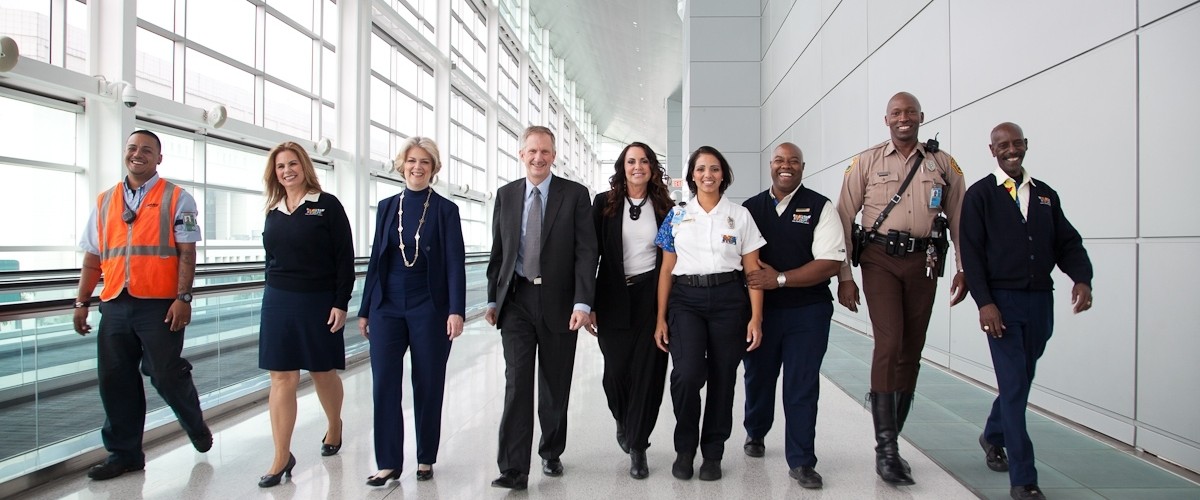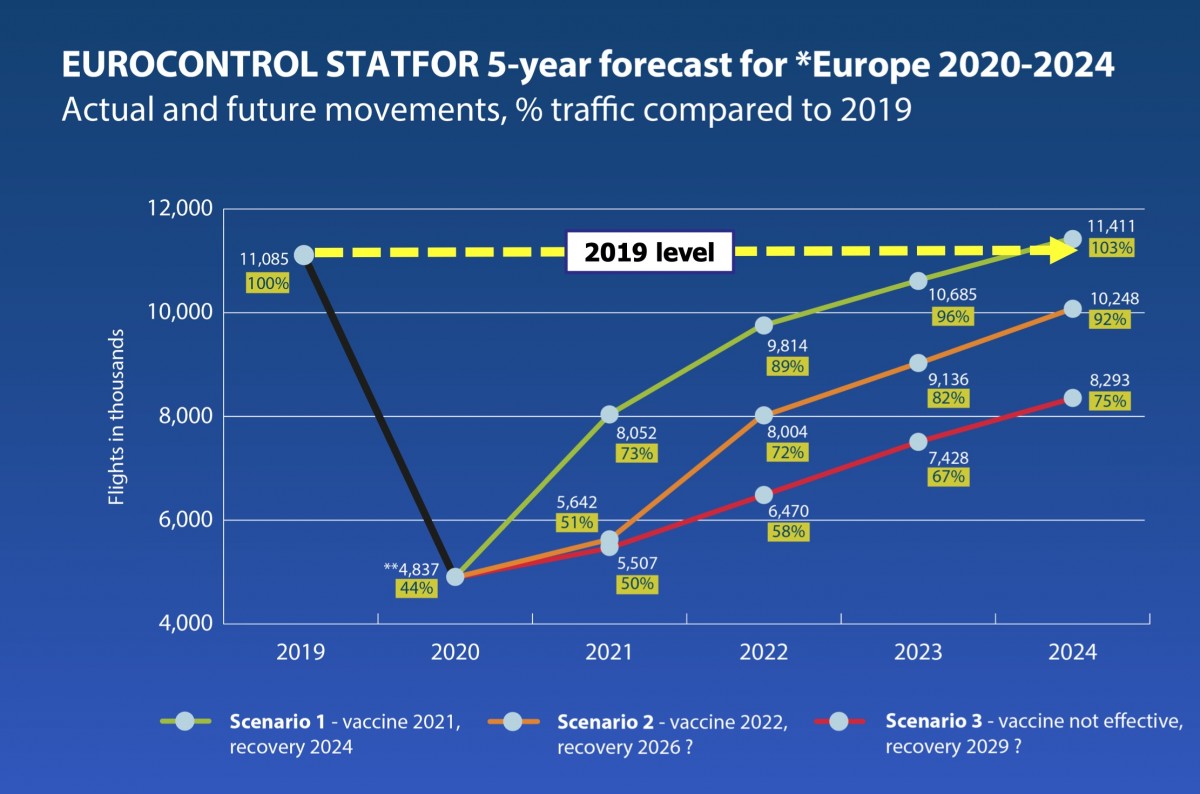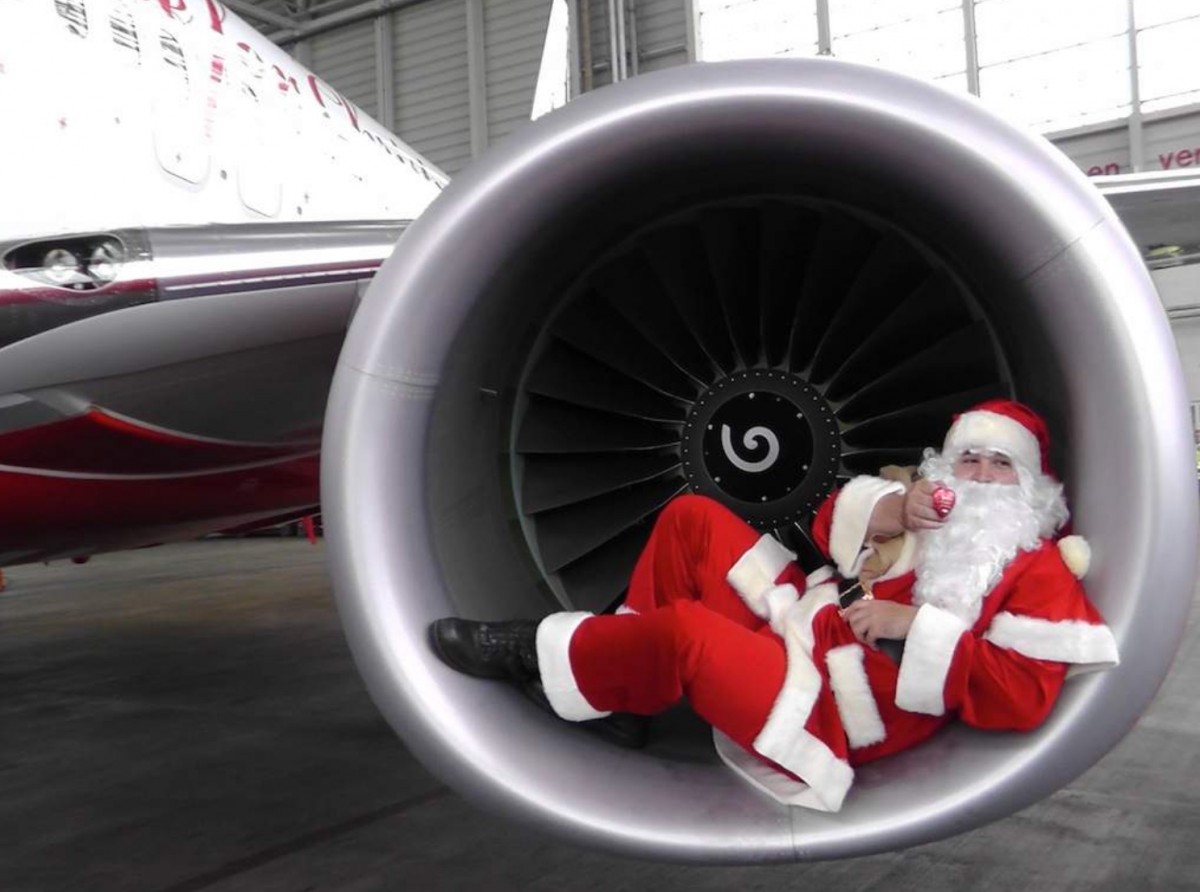Cabin crew, prepare for takeoff! After many difficult months, it looks like there’s light at the end of the dark, dark COVID tunnel. With vaccinations on the horizon, airports and airlines are contemplating how to relaunch aviation in 2021. Before we all check out for a much deserved holiday break, let’s take a look at three key strategies for the coming year.
How can we restart aviation in 2021?
-

-
We need a health ESTA
Foreign travelers who fly to the United States will be familiar with ESTA, the Electronic System for Travel Authorization that determines whether non-US passengers are permitted to enter the country. Eligible travelers apply online before their flight. Successful applicants receive a travel permit, which they’re required to submit to the airline at check-in.
The discovery of successful coronavirus vaccines, and their imminent rollout, has come as a huge relief. But this new stage of the pandemic also opens up a new set of questions for our industry. Will travelers need to prove they’ve been vaccinated before they can get on a plane? Or will evidence of a negative COVID test suffice? How will passengers credibly demonstrate either of those things?
ESTA emerged in response to 9/11 to prevent what was, back then, aviation’s biggest challenge: terrorism. Today our biggest challenge is COVID. That’s why we need a health equivalent to ESTA: an online system that monitors passengers’ compliance with health regulations and confirms their eligibility to fly before they begin their journey. Some smart countries, like Iceland, are leading the way. Before checking in, travelers are required to register for a COVID test, which is administered on arrival at Keflavik airport. The Portuguese island of Madeira takes that one step further: visitors can opt to get tested on arrival, or upload a negative COVID test before they fly. Helpful airport staff scan each passenger’s Madeira Safe QR code on arrival, and direct them into two lanes according to their choice.
Iceland and Madeira have both successfully implemented an online COVID monitoring system that ensures passenger safety, and takes the pressure off airports and airlines by standardizing and digitalizing compliance procedures. But these are two islands in the Atlantic Ocean, with few ports of entry. Moving forward, our challenge as an industry will be to learn from these examples and scale them to the needs of much larger and more complex aviation markets. Doing so is absolutely essential to guarantee safe traveling conditions and restore our customers’ trust in flying.

-
Retrench or retrain?
Airports and airlines are facing painful staffing decisions. Thousands of smart, motivated people have been laid off or furloughed in recent months—including some readers, who have shared those difficult experiences with me. In 2021, our industry will be under renewed pressure to cut costs. That will lead to fresh rounds of layoffs.
Airports and airlines will understandably need to let staff go. But before they do, they should consider the long-term consequences. Even in good years, our industry struggles to attract talent. Firing employees now will lead to an enormous brain drain, as retrenched staff migrate to other industries. Their gain will be our loss—and we’ll feel that loss in know-how acutely when air traffic picks up again.
Moreover, current downsizing decisions will have financial consequences further down the line. When travel demand comes back—and it will—airports will need to quickly recruit a large number of skilled workers. Before making any hasty decisions, successful airports will weigh the short-term savings gained through layoffs against the considerable expense of hiring and training thousands of staff two to three years from now. Airports routinely conduct rigorous cost-benefit analyses before making big decisions about long-term infrastructure investments. Shouldn’t they apply the same level of rigor when it comes to assessing their future workforce needs?
That said, it’s crucial to avoid creating “zombies”: airlines and airports whose business model is permanently broken, and who can only survive through ongoing welfare payments from the government. It would be foolish—even dangerous—for employees to carry on with business as usual, ignoring how drastically the pandemic has impacted our industry. Many of the projects that staff were working on pre-COVID have been rendered irrelevant. Asking them to continue performing tasks that are no longer needed helps no one, not least the employees themselves. It’s also a terrible use of bailout money.
Instead, successful airports will use this time wisely by directing their staff to prepare for the challenges and opportunities of the coming business cycle. They will begin by asking each department to review its operational guidelines: identifying opportunities to improve efficiency and reduce costs (more on that here). They’ll also use this time to tackle some of the big-picture challenges that threaten the long-term viability of the aviation industry. First and foremost: adapting to climate change.
Finally, successful airports will retrain their staff in order to find new opportunities for growth, in areas such as e-commerce and real estate. Doing so will empower airports to update their business model, increase non-passenger revenue, and strengthen their overall financial resilience.

-
Be hopeful—but be realistic
We all breathed a huge sigh of relief (under our masks!) when vaccine trials began delivering promising results. The first round of vaccinations this month is a source of hope at a very dark time. Things are looking up.
That said, the recent good news doesn’t mean that our industry’s crisis is over—far from it. Vaccinating an entire planet is an enormous undertaking. There are a lot of uncertainties. Assuming vaccines are effective, how quickly can we distribute them? How many people will agree to get jabbed, and how will we deal with those who refuse? Finally, will 2021 see an outburst of pent-up travel demand, or will the pandemic-induced economic downturn depress traffic for years to come?
All of these questions have serious implications for the future of aviation. A recent study by Eurocontrol sheds some light on what to expect. In it, the authors identify three possible recovery scenarios for the European aviation market. The most optimistic one assumes that vaccines will be widely available by summer 2021, leading to an uptick in passenger confidence and increased demand for long-haul travel. In that best-case scenario, air traffic would return to 2019 levels by 2024. By contrast, the most pessimistic scenario anticipates a slow rollout of vaccines—some of which end up being ineffective—accompanied by renewed outbreaks. The result would be a prolonged and widespread unwillingness to fly. In that worst-case scenario, air traffic won’t return to pre-COVID levels until 2029.
I’m not trying to bum you out with these projections. Personally, I can’t wait to get on a plane. I sorely miss spending time with my far-flung friends, family, and colleagues. So I’m cautiously optimistic about the road—or rather flight path—ahead.
But we need to acknowledge that this crisis is shaping up to be a marathon, not a race—and what we do over the next few months will critically determine how long it takes our industry to recover. Assuming things will quickly go back to ‘normal’ is extremely dangerous: it could lead to inaction and a false sense of complacency, both of which will actually prolong the crisis. If we really want to restart aviation, then it’s up to each and every one of us to do what we can to restore passenger confidence, embrace new revenue priorities and new operational demands, and come together as an industry to rebuild a commercially viable business model—even if that means moving far beyond our comfort zone.
But before we do that, let’s all take that much needed break that I mentioned at the beginning of the article. Happy holidays everyone!

-
-
-